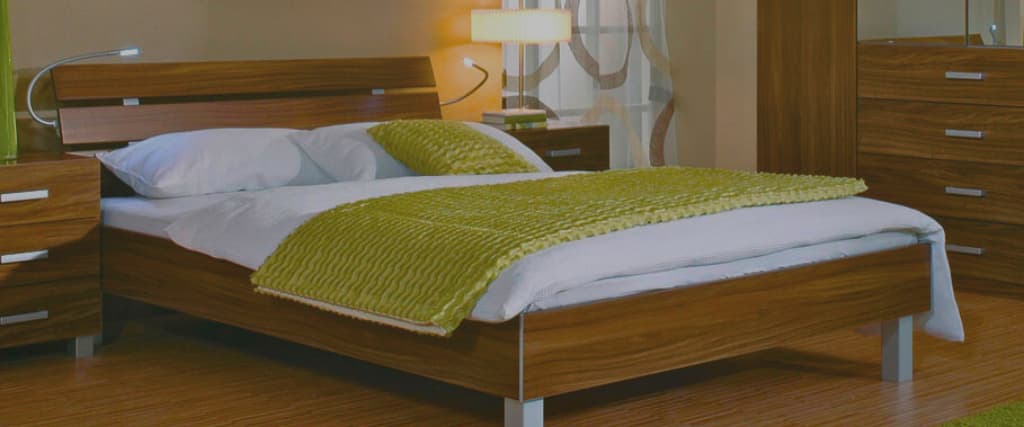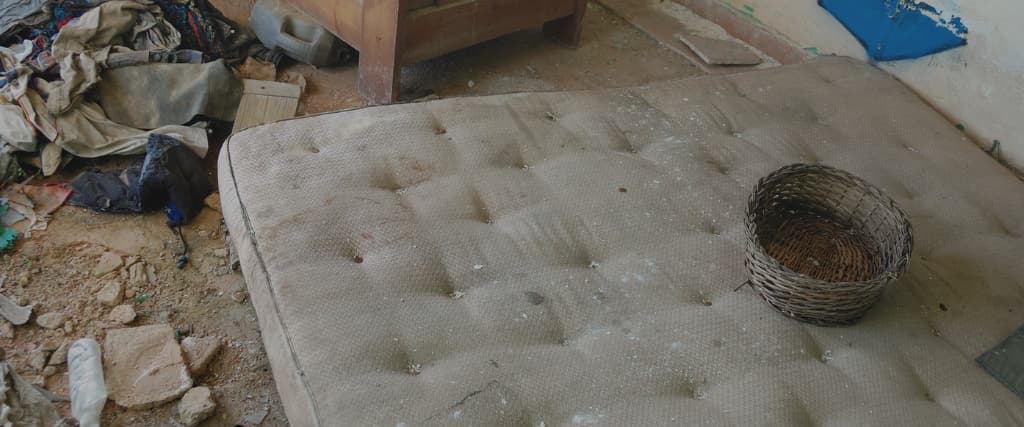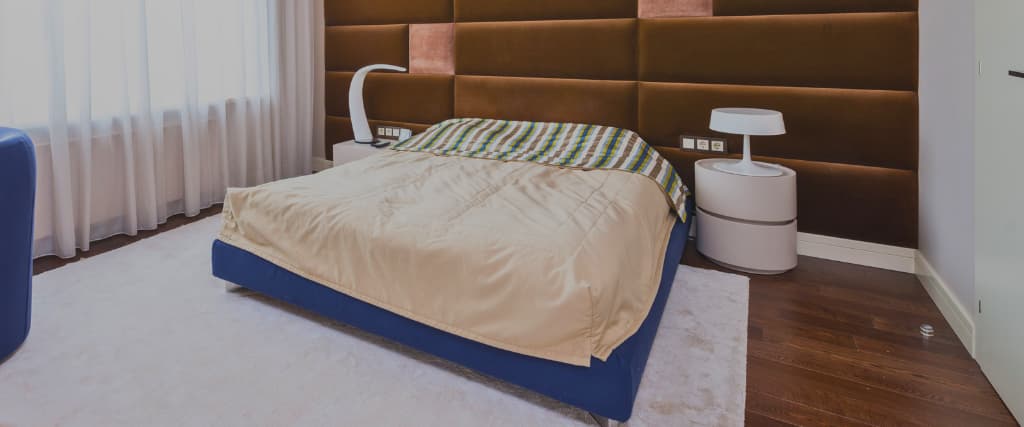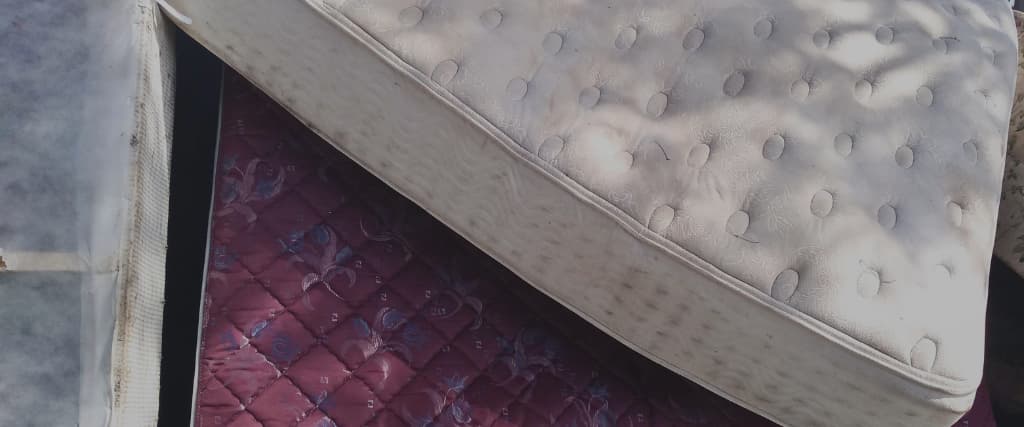A sagging mattress is a common issue that many people face due to continual wear and tear. Over time, the support materials in the mattress can become weak and cause the mattress to sag. This can lead to problems such as lack of sleep, back pain, and discomfort while sleeping.
Fortunately, there are a few simple and inexpensive ways to fix this problem and get your mattress back in top shape. This article will explore how to fix a sagging mattress and provide some tips for keeping your mattress in good condition for longer.
Reasons Why Your Mattress Could Sag

There can be several reasons your mattress could sag, some of which are more easily fixable than others. Here are a few common reasons that could cause your mattress to sag:
1. Sleeping Positions

Your sleeping position can cause your mattress to sag in certain areas. When you sleep mostly on one side of the bed, it can lead to a sagging mattress. For example, if you tend to sleep on your back, the middle of the mattress will start to sag over time.
2. Inadequate Support

If the mattress does not have enough support in the form of box springs or a frame, it can cause it to sag. This is especially true for memory foam mattresses requiring more support than traditional spring mattresses.
3. Wear and Tear

As with anything, your mattress will eventually begin to wear out due to regular use. The more you sleep on it, the more likely it is to sag. Older mattresses with materials that aren’t as supportive and have been used for an extended time are especially susceptible to this.
4. Soft or Poor-Quality Mattress

Soft mattresses or those made with poor-quality materials can easily become compressed and sag over time, especially true if they are not adequately supported.
Poor-quality materials, such as foam that doesn’t provide enough support, can easily weaken and cause the mattress to sag.
Additionally, soft mattresses are more likely to sag due to the lack of support from springs or coil systems.
5. Improper Cleaning

When a mattress is not cleaned regularly, dust and dirt can accumulate on its surface and in the materials from which it is made. This dirt can cause the mattress to break down and weaken, leading to sagging.
Additionally, if a mattress protector is not used, body oils, perspiration, and dirt can also build up on the mattress, which can weigh it down and cause premature sagging. Regularly vacuuming and cleaning your mattress, as well as using a mattress protector, can help to prevent this from happening.
Are Some Mattresses Worse than Others?
Even as you buy that elegant and classy mattress (cushioned comfort layer, foam, or latex mattress), you should remember that they’re all prone to sagging at some point.
All mattresses soften as the body weight frequently compresses them, accelerating the beds’ wear and tear. The standard innerspring mattresses are not exempted either; infact, their springs lose part of their coil tension.
The elasticity of the mattresses reduces significantly. As a result, fewer bounce-backs develop into troughs and peaks that are incredibly uncomfortable.
Signs That Your Mattress Is Saggy

In addition to the apparent visual indicators, a sinking mattress typically exhibits further degradation and damage “symptoms.” Here are a few examples:
1. You Feel Like Falling From Your Bed
Because a sagging mattress can’t support your weight perfectly, you may wake up with a strange sensation of falling out of your bed or landing in the middle of it.
This sensation will ultimately cause you to adopt “protective strategies,” such as napping in an unfavourable posture or placing a cushion on your back for support.
2. You Wake up Fatigued

You’ll have the worst sleeping experience if you have a saggy mattress because you want to avoid the “hole” in the middle of your bed. This ongoing struggle (of trying to avoid the hole in the middle of the bed) prevents you from getting a peaceful night’s sleep.
3. You Experience Back Pain When You Awaken
Since a sinking mattress doesn’t give your spine the required support, you may have slight back discomfort over time. This occurs because your weight is unevenly distributed, placing too much strain on specific nerves and muscles, leading to backache or achy arms.
The Consequences of Saggy Mattresses

Sagging can impact your sleep and general quality of life. Below are some of the consequences of sleeping on a saggy mattress:
- Sleeping hot: More of your body is encased in a mattress as you sink into it. And as a result of the reduced air circulation, heat may be trapped. Sleeping heated is uncomfortable and can cause insomnia, daytime weariness, poor performance, and irritation.
- Aches and pains: The tension needed to support your body composition decreases when a mattress sags. This is why you may wake up with neck stiffness, lower back discomfort, and other pains and aches.
- Discomfort: Sleeping on an uneven surface may cause a lot of discomforts, as you’ll be trying to avoid the “hole” in the middle of your bed, keeping you awake all night.
- Noise: The springs may get louder if your innerspring mattress has lost its supporting foam layer and coil strength. If you or your sleeping partner toss and turn, it could be challenging to fall asleep.
- Intimacy Issues: It might be challenging to enjoy intimacy on an uneven, bumpy mattress. For example, you could face challenges when cuddling.
How to Fix Mattress Sag

If your mattress has begun to sag, there are a few easy ways to fix it and ensure you get a good night’s sleep. Now let’s look at how to fix a sagging mattress:
1. Rotating the Mattress
The first and most effective way to fix a mattress sag is to prevent it in the first place. By rotating your mattress, you can extend the shelf life of your mattress and prevent it from sagging just too soon.
Also, drooping is more common since pressure is exerted in the areas that support your shoulders and hips. Occasionally turning the mattress can prevent adding extra pressure to the regions already showing signs of sagging.
2. Using a Mattress Topper
Using a bed topper is one of the most significant ways to restore a sagging mattress. As the name implies, a mattress topper is placed on top of the mattress to promote comfort.
There are many different types of mattress toppers on the market — with thicknesses ranging from three to five inches. Mattress toppers are manufactured from various materials, including foam, latex, wool, and feathers.
You may select a mattress topper that best suits your needs based on how much your mattress is sinking (or how much it has sagged).
3. Support the Mattress With Plywood
Another low-cost solution is using a small piece of plywood to prop up a sinking mattress. In the case of a box spring, for instance, the plywood would go between the box spring and the mattress. And ensure that the plywood sheet is the exact dimensions of your bed.
Adding plywood to a sinking mattress may help in the short term, but it will restrict air from circulating through the bed if you rely on it for the long term.
4. Make Sure Your Mattress is Supported
It’s common these days to find bed frames that use slats instead of box springs to keep your mattress in place. Therefore, you’ll have to think about purchasing a box spring and ensure 3-inch planks or fewer gaps support your bed.
5. Fill up the Gap Between the Mattress and the Mattress Topper
Filling in the sags in the mattress before applying the topper is another simple trick. Although cushions can do in a pinch, memory foam pillows are recommended.
If you have any spare bedding, such as sheets, towels, or cushions, you should feel more secure when you put on your cover. And this should also help if your new topper is a little thick.
6. Try the Mattress Helper
It’s been on the rise lately, and many are now utilising the Mattress Helper to remedy sagging mattresses. A mattress helper brings the centre of a bed back up to the sides. It’s priced at $63.99, with excellent reviews on Amazon.
7. Check Your Warranty
A warranty on a mattress can help fix a sagging mattress in two ways. First, it ensures that the manufacturer will repair or replace any parts that are deemed to have failed prematurely or have a defect. This means that if the mattress has begun sagging due to an issue with the material or construction, it can be replaced for free under warranty.
The second way a warranty can help fix a sagging mattress is that it typically offers in-home repair services. The manufacturer will send an expert to assess the mattress, diagnose the issue, and fix or replace it. This helps save time and money since you don’t need to transport a sagging mattress to a repair shop or pay for expensive repairs.
How to Fix a Sagging Pillow Top Mattress
Pillow-top mattresses, in general, are not designed to be flipped. This means that turning the bed might be an easy solution to the problem of a drooping pillow top. When you change your position on your mattress, your heavier portions will sometimes rest in different spots.
Put a sheet of thin plywood below your mattress and box spring to provide a solid base.
You can take a few steps to fix a sagging pillow top mattress.
1. Check the base of the mattress — If the mattress is sagging due to an issue with the foundation, you should address this first. Check for any warping or damage, and make sure the base is even and stable.
2. Flip your mattress regularly — This helps distribute the sleeper’s weight more evenly, preventing sagging.
3. Place plywood between the mattress and box spring — Doing so will help provide extra support for the pillow top and prevent it from sagging too much.
4. Replace your mattress if needed — If the mattress has reached a point where flipping, supporting, and replacing the base won’t help, it may be time to invest in a new mattress.
Worry not, as many mattresses come with a warranty that can help cover the cost of repairs or replacement.
How to Get a Dent Out of Pillow Top Mattress
If you’ve noticed an indentation or dent in your pillow top mattress, don’t worry. You can take a few steps to make it look like new again.
First, try to redistribute weight on the mattress as evenly as possible to even out the mattress and reduce the size of the dent.
Also, you could use a vacuum cleaner to gently suction out any air or other material that may have accumulated in the dent. This can help fill in the area and reduce the visible signs of a dent.
If the dent is still visible, try placing a wet cloth over the affected area and applying pressure. This can help de-compress the mattress foam and reduce indentation.
Finally, if all else fails, consider getting a new mattress or taking advantage of any warranty coverage that may apply. This can help provide you with a replacement mattress and ensure that your bed is in the best condition possible.
How to Fix a Mattress That Sinks in the Middle?
If your mattress is sinking in the middle, there are a few solutions to help fix it.
First, check the frame and foundation of the bed. Make sure that they are level and sturdy enough to support the mattress. If there are any issues with either, you should address this first.
Next, flip the mattress over to redistribute the weight and prevent any further sinking in the middle.
If the mattress doesn’t respond to these solutions, consider adding a firm layer of plywood between the mattress and the box spring. This extra layer of support can help reduce sagging in the middle.
Finally, consider a warranty replacement or repair. Many mattresses come with warranties that can help cover the cost of repairs or replacements.
How to Fix Mattress Springs
Mattress springs are not designed to survive for thirty years when they are built. In other words, the springs in your mattress are bound to droop as they age. However, flipping your mattress regularly may extend the lifespan of the springs for a few more years.
If your mattress is sagging due to broken or damaged springs, there are a few steps you can take to fix them.
First, check for any broken or bent springs; if you find any, replace them as soon as possible before the issue worsens. Next, you can try reattaching loose springs using a screwdriver or pliers to secure them back.
If the mattress is still sagging, consider adding a layer of plywood between the mattress and the box spring to provide extra support. You can also add a topper or foam pad to the mattress to help make it firmer and reduce any sagging.
How to Fix Mattress Indentation
You can quickly repair mattress indentations following these detailed procedures.
- To begin, clean your mattress to avoid indentation periodically. Vacuuming your mattress might get rid of the lumps and divots.
- Second, if a dent appears in your mattress, you may push it back into form by piling more pillows. It is possible to temporarily correct mattress indentation by putting the cushions beneath the bed.
- Lastly, test out the mattress’s comfort by lying down on it. By shifting the cushions around, you may make the appropriate adjustments.
Frequently Asked Questions
Can You Fix a Mattress That Sinks in the Middle?
Yes, using plywood, you can fix a mattress that sinks in the middle. Finding the appropriate plywood and having it cut to the dimensions of your bed will do the trick.
Why Is My Mattress Sagging in the Middle?
There can be several reasons why your mattress is sagging in the middle. Some of these may include inadequate support from the box spring or frame, an uneven sleeping surface due to an old or worn-out mattress, improper weight distribution from the sleeper, or a damaged spring. Additionally, mattresses naturally sag in the middle over time due to regular wear and tear.
How Long Should a Mattress Last Before Sagging?
7-10 year range. Although seven to ten years is a good rule of thumb, not all beds will stand up to heavy use and cleaning for that long. The longevity of a mattress depends on several variables, including its durability.
Can a Mattress Topper Make a Bed Firmer?
A mattress topper will provide the impression that the bed is firmer than it is, but it will not change the firmness of the mattress below. However, a bed topper would be an excellent option to achieve the ideal amount of cosiness.
Can a Dipping Mattress Cause Back Pain?
Yes, a dipping mattress can cause back pain because it does not provide enough body support. When a mattress is sagging, it can cause pressure points, resulting in aches and pains. In addition, when a mattress dips in the middle, it can create an uneven sleeping surface, further contributing to back pain.
Is Mattress Sagging Normal?
Sagging is not normal for brand-new mattresses. If your bed is sagging, it’s probably old and worn out and time to replace it. The manufacturer’s warranty may protect a brand-new sinking mattress, so you must contact the retailer for a solution.
Will Plywood Help a Sagging Mattress?
Yes, plywood can help a sagging mattress by providing extra support. Placing a layer of plywood between the mattress and the box spring can keep the mattress from sagging. Additionally, it can help redistribute weight and provide more even support for your body while you sleep.
Can You Reverse Sagging Mattress?
Yes, you can reverse a sagging mattress. A mattress’s lifespan can increase through regular rotation, which involves switching the head and foot of the bed. You can delay the onset of sagging by regularly rotating the bed. Generally, you should do this every three to six months.
Do Softer Mattresses Wear Out Faster?
Yes, softer, more delicate mattresses tend to wear out more quickly than their firmer counterparts. Thick, soft comfort layers may sag or form permanent indentations sooner than thinner, firmer ones, resulting in less support and more discomfort.
Why Is My Back So Stiff and Sore When I Wake Up?
For various reasons, your back may be stiff and sore when you wake up. One possible cause is sleeping on an old or worn-out mattress, which can cause pressure points and an uneven sleeping surface. Sleeping in the wrong position or on an unsupportive mattress can contribute to back stiffness and soreness. Other factors such as age, poor posture, or lack of exercise may play a role.
Final Thoughts
In conclusion, you can take a few steps to fix a sagging mattress. These include checking the frame and foundation of the bed, flipping the mattress over, adding a layer of plywood between the mattress and the box spring, or replacing or repairing it if necessary. Additionally, a mattress topper or foam pad can help make the mattress firmer and less sagging.






